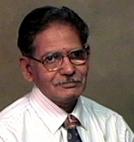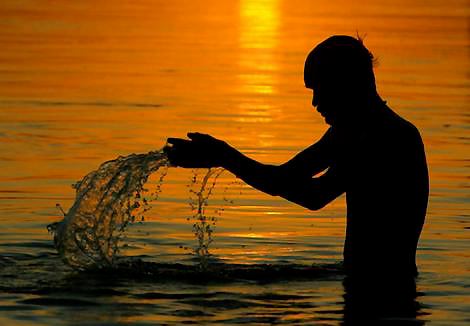
आदि-शङ्कराचार्य


– Prof. C. L. Prabhakar, President, WAVES, Bangalore Chapter

Prof. Prabhakar obtained Ph.D. in Vedic Studies (thesis on’ Sukla Yajurveda’) from Poona University, Poona in 1968. He is former Professor of Sanskrit and has published many books and articles. Honored with the award ‘Veda Vaaridhi’, currently he is director of the Nada Veda Adhyayana Kendra, Bangalore. He is active to spread Vedic heritage and culture.
Magha-Masa is important among the months in Hindu calendar. This month is an opportunity to get reduced of our sins. ‘Maaghamsyaatitimaaghah’ meaning no sins more could be acquired further. Doctors know the reducing tablet to reduce pain. So like this month to reduce our sins.
Hindu calendar is invested with twelve months. Each month is covered by 30 days. Every day has the five (pancanga) elements viz. Tithi, Vara, Nakshatra, Yoga and Karanas. Everyday is important for spiritual Practices. But there is choice and special importance. We have twelve months beginning form Caitra-Masa and going upto the Phalguna-Masa. Every month has a connections of some significance and mythology to speak the importance of the month and marking auspicious days in it. Sun would be transiting every month in to one sign (rasi) to another sign. It occurs usually on the 14th day of each month called Sankramana technically. There are twelve zodiac signs to complete one year’s time. When Sun is in Makara-Rasi, from then, for six months it is called Uttarayanam and the remaining six months are known as Dakshinayanam. These indicate the direction of the Sun astronomically moving towards north and southern directions. As a result there would be effects upon the people and nature: good, bad and different due to the movement of Sun. Manasollasa of Somadeva is a source Book for us to know about the importance of days and months, festivals and more.
Magha-Masa is the eleventh Month of each Year. This year is called by name Manmatha and the next would be Durmukha year by name. Out of the cycle of sixty years, this is the 29th/30thYear of the cycle. Each month is characterized with the Nakshatra-name. For example, if Sravana-Nakshatra is there on the full moon day then it is called Sravana-Masa. Likewise the Magha-Masa is the name derived from the Magha-Nakshatra on the Purnima. Similarly the other months go by the name of a Nakshatra. Although we have many numbers of years, we have only seven days of life. One day to take birth and another some day to exit from the body and the world. However seven are the days of life beginning from Sunday to Saturday. These days too go by the names of the planets Ravi, Candra and so on. Rahus and Ketu are the two nodes who entered the count among the planets as Chayagrahas. They follow the main planets. Moreover they do not have any orbit .They are simply ascending and descending nods of ecliptic and moon orbit

Let us know the prominent festivities in this month. At first, on 5th day of Shukla-Paksha it is called Sri Pancami or Vasanta Pancami. This is the first festival when Goddess Sarasvati is worshipped. She is known also as Sarada Devi, Syamala Devi and Vag Devi. She is called Jnanasarasvati. On this day Sarada-puja is done. She is a Goddess who blesses good knowledge and good education (sadbuddhi and vidyanaipunya). On this day many people observe the important samskara namely Aksharabhyasam to their children with a belief that the child would be good in education, learning and prosperity.The child is introduced to writing the alphabets and salutation to Lord Siva well known as Dakshinamuty, a guru to all. On this day Goddess Sarasvati is offered Payasa as food. And the child is made to write ‘Om namahsivayasiddhamnamah’. In Devi Bhagavata details of Sarasvati Aradhanaare given. We have prayer to Sarasvatiin a length of a Veda-Sukta by name Sarasvati-Sukta that could be recited on that occasion specially. The sixth day of the month namely Shashthi is festival of Lord Subrahmanya. He is born on this day and so his puja is done. Abrahmacari (unmarried Boy) is fed and worshipped symbolically on this day to get the grace of the Murugan. The next day is Rathasaptami, when Sun turns to the northern direction fully and gallops to pick up more and more heat. On this day Suryaradhana is done with offering of payasa (naivedya). Arunaprasnapurvaka Surya-namaskaras could be done to get the grace of this deity. Arunaprasna is the first section of Taittiriya Aranyaka. It contains thirty two passages reciting which 32 namaskaras are offered to Suryadeva. Surya loves prostrations (namaskarapriyobhanuh). On the Eleventh day we get Bhishma Ekadasi when Bhishamacarya gave up his body (bhautikasarira) in the presence of Sri Krishna. He is the avatar of one of the eight Vasus. This ekadasi is virtuous and people get their desires fulfilled. This day is called ‘Bhishmaikadasi’. Bhishma had the boon from his father Santanu Maharaja to leave the body whenever he desired (svacchandamarana scope). Then we get the Purnima, the full Moon day. Every month we get Full moon days (Purnimas.) But this is one of the three special Purnimas of each year. Actually Asvija Purnima, Kartika Purnima and Magha Purnima are best. Especially on this Purnima day, there would Magha Nakshatra. On this day when bath to Siva is done, it is highly fetching and beneficial. Siva Purana extols more details on this aspect. Texts like Padmapurana, Nirnayasindhu, Krityatattva elaborate on the importance of bath at early hours of the day before sunrise. Very auspicious would it be if the bath and dip is taken in the sacred river Ganges at Kasi or elsewhere where the Ganga flows. Even other sacred rivers too remain helpful for the ritual of Maghasnana with sankalpa. In Bhagavata too the merit of taking dip in Ganga is described, It is said there that no other river but ganga waters has exclusive power to undo the sins at that time. In this month not only the Devataradhana even Pitrutarpana is also recommended to be significant as it pleases the Manes (the Pitrus). Magha-Nakshatra is the constellation of Pitri-devataa (deity of ancestors).
After Purnima, New Moon days begin. On eighth day it is called ‘Anaghashtami’. Lord Dattatreya is worshipped. Anagha Devi is revered as the goddess Lakshmi herself. She is called Anagha Lakshmi. We can get the blessings of Guru as well as Goddess with this worship. He is known as Dattaguru. We recite amantram ‘Dattagurumbhaje’ simply to get his grace. Dattatreys is the avatar of three Murtis Brahma, Siva and Vishnu who are three forces and Powers creation, annihilation and maintenance of the Universe. Therefore, Dattatreya is the preceptor who blesses all the three abilities in the upasakas. Also Natya Ganapati is worshipped on this day. He provides expertise further in the performing arts and excellences in the professional career. Ganapati is known in 32 forms and therein Natya Ganapati is special.
Actually every thirteenth day (trayodasi) of each month we get Pradosha Puja when Siva is worshipped. That day is called as Masasivaratri. The next day on the caturdasi at midnight Sivaratri actually dawns. But this month alone that day is called Mahasivaratri when Siva is worshipped strongly all the time. It has three durations (yamas) of night. People worship Lord Shiva with Mahanyasapurvaka Rudrabhishekas and other pujas. They also recite many Siva stotras. All this activity provides benefit and hope for liberation and mundane prosperity. After all one of the most important is to a get masa-punya as far as possible in the given calendar of Life to everybody including gods and others. Everybody is born but never the Brahma who is Lord Purusha Narayana who is described as ‘ajayamanobahudhavijayate’ in Purushasukta of RV. It is said here that the Lord does not take birth but causes births to take place.
Besides all these festivals and vows (vratas) etc. in this month, the Sundays are auspicious and important. They are best days for Surya Anushthanas. The forms of rites and devotion like Arunaprasnaparayanam, Arunahomam and recitation of Surya Sahasranama, Adityahrudayamand more are observed these days depending on the convenience and time-scope. This is technically called as Maghabhanuvara.
All the days of this month bath before sunrise is precious. This is called as Maghasnanavratam. That itself brings merit, unknown cleansing, peace and prosperity (punya).
Thus this Magha-Masa is a month well liked by gods and more so the Goddess Saradadevi, Subrahmanyaswamy, Bhismacarya who is Vishnu Rupa only. On Purnima, Siva Parvatis, Goddess Anagha Devi, Anjaneya, Lord Narasimha, Lord Kumaraswamy etc. can be worshipped.
We have Magha Purana where we come across the super importance of this month. So let us get the special grace of the deities to smoothen our life free from hurdles and unwanted things.
‘Om namahsivayasivataraya ca.’